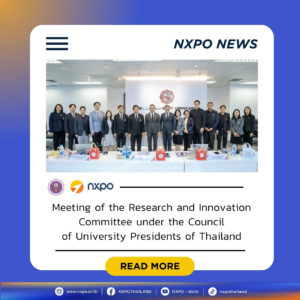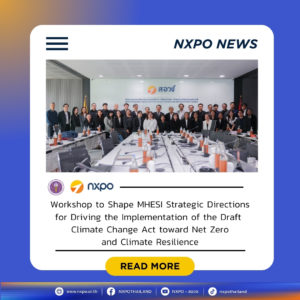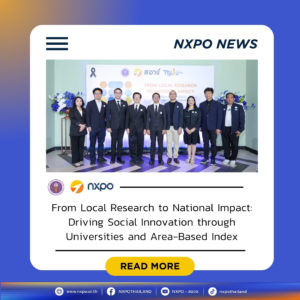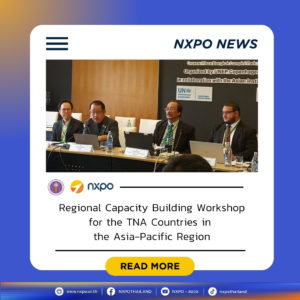NXPO, in collaboration with the Hydro–Informatics Institute (HII), hosted the “MHESI for Water” Policy Forum on 13 August 2025 at the Queen Sirikit National Convention Center.

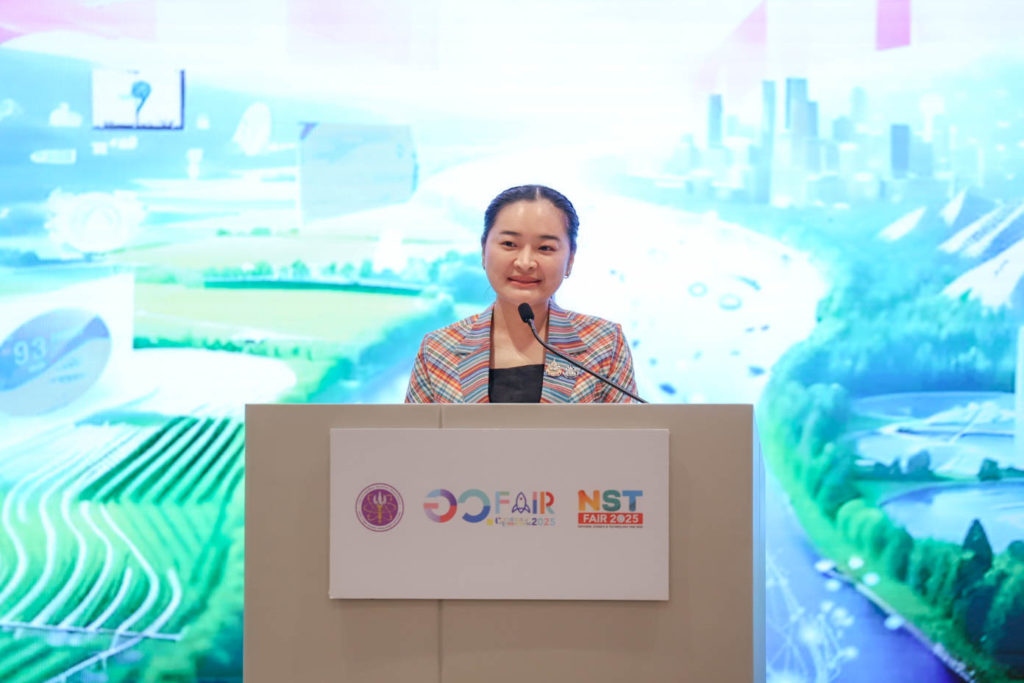
In her policy address, Ms. Sudawan Wangsuphakijkosol, Minister of Higher Education, Science, Research and Innovation (MHESI), called on MHESI agencies and partner networks to fully implement the “MHESI for Water” policy, emphasizing the application of science, technology, and innovation (STI) to ensure national water security and sustainability. She assigned NXPO and HII to prepare a White Paper for submission to the National Higher Education, Science, Research and Innovation Policy Council with the aim of elevating the policy to national level and drawing funding from the Science, Research, and Innovation Promotion Fund to support its implementation.
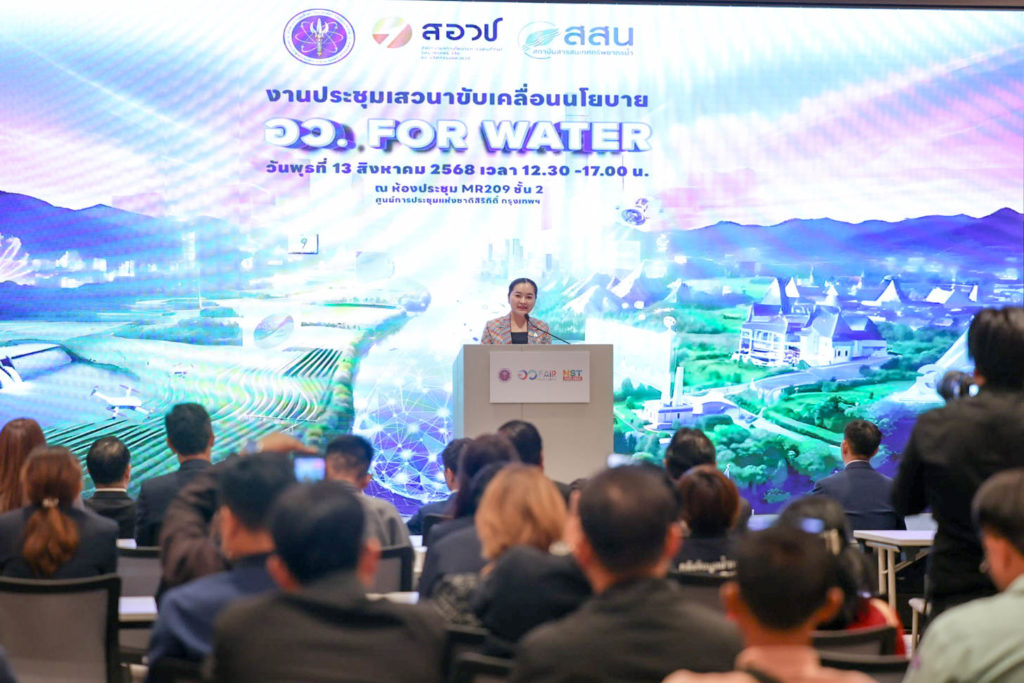
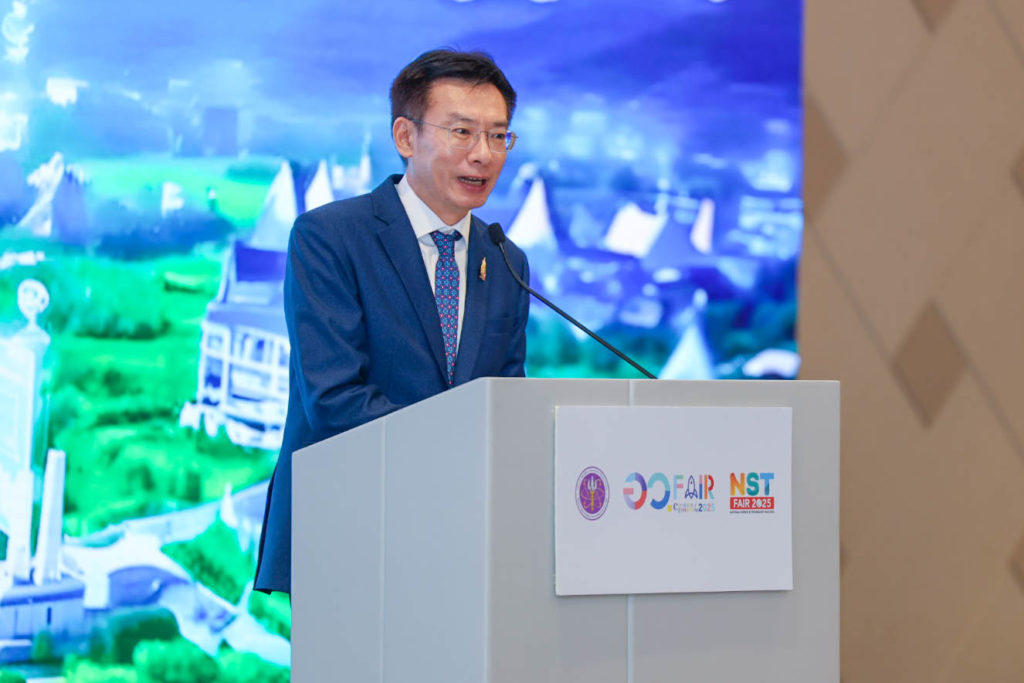
Prof. Dr. Supachai Pathumnakul, MHESI Permanent Secretary, highlighted “Smart Water Governance” as the policy’s central driver, supported by three key pillars: (1) accurate data from the National Hydroinformatics Data Center (NHC), developed by HII; (2) demand–driven research supported by Thailand Science Research Innovation (TSRI); and (3) robust policy, with NXPO serving as the bridge between research and implementation.
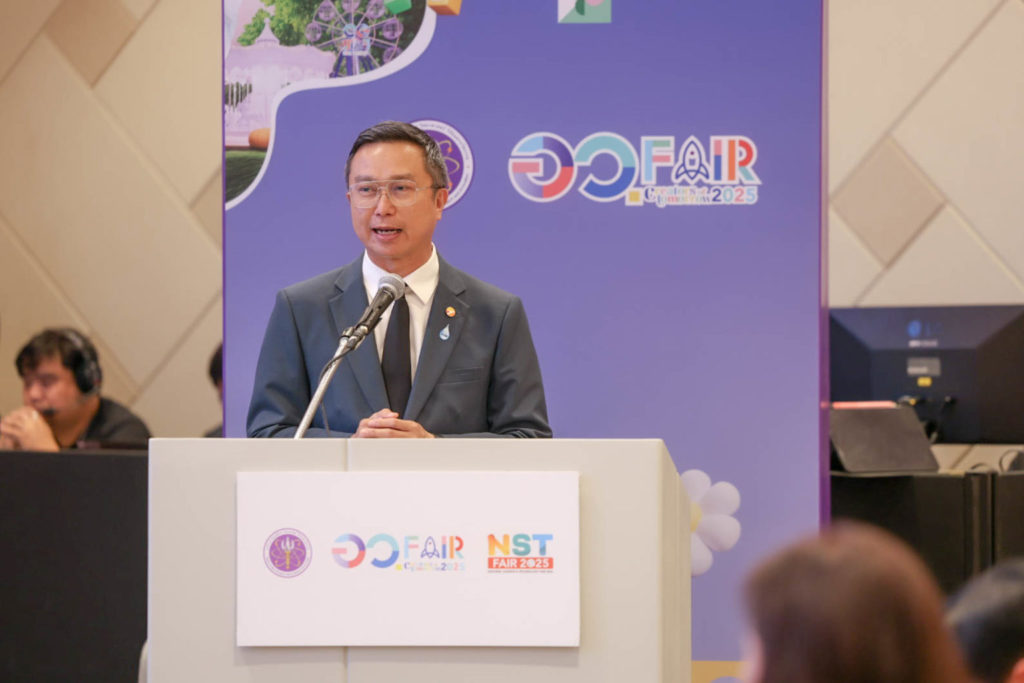
Dr. Surachai Sathitkunarat, President of NXPO, stressed that effective water management requires three integrated components—data, technology, and policy—applied across all levels, from communities and local authorities to central government. This includes large–scale water data systems, advanced analytics, and legal frameworks to address climate change and environmental degradation.
“MHESI’s strengths lie in its pool of experts, nationwide research network, ability to create area–specific innovations, and access to dedicated research funds. Community water management should draw on lessons learned locally as high–tech solutions are not always the answer. In some cases, existing technologies or local wisdom can be applied. Community leaders must be multi–skilled, and HII has recommended adopting the water balance concept in problem–solving,” Dr. Surachai noted.
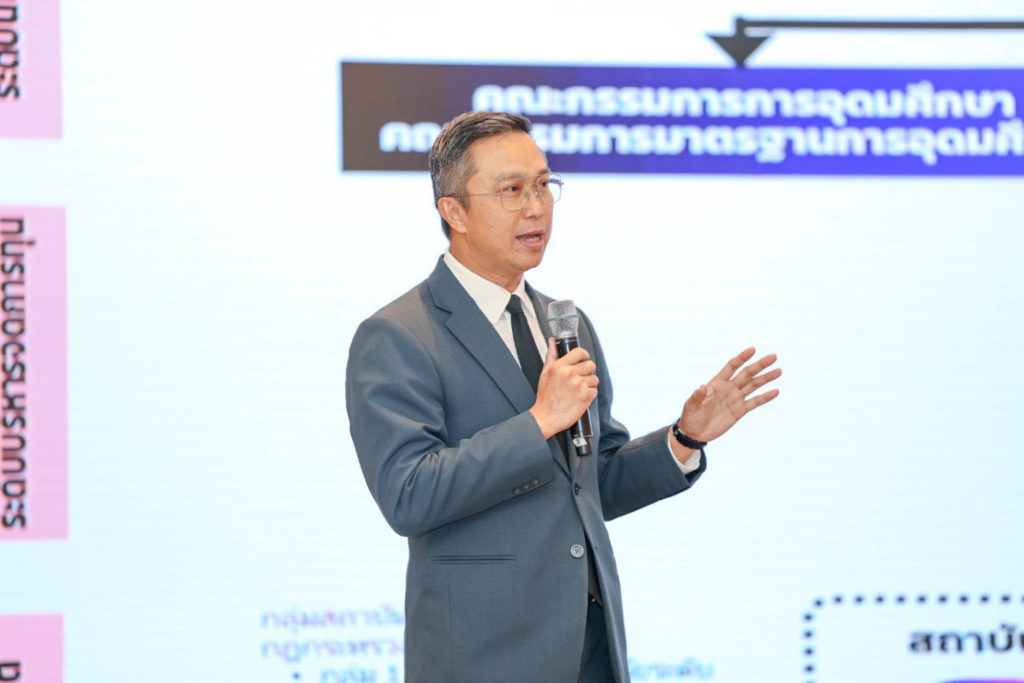
He added that the focus should be on water governance and innovation throughout the value chain to reduce impacts and increase efficiency. The “MHESI for Water” policy will be implemented in two phases: Phase 1—intensive water management with dedicated mechanisms; Phase 2—cross–ministerial implementation in partnership with the Policy Council, the National Water Resources Committee (NWRC), the Department of Climate Change and Environment (DCCE), the Ministry of Natural Resources and Environment, and other relevant agencies.
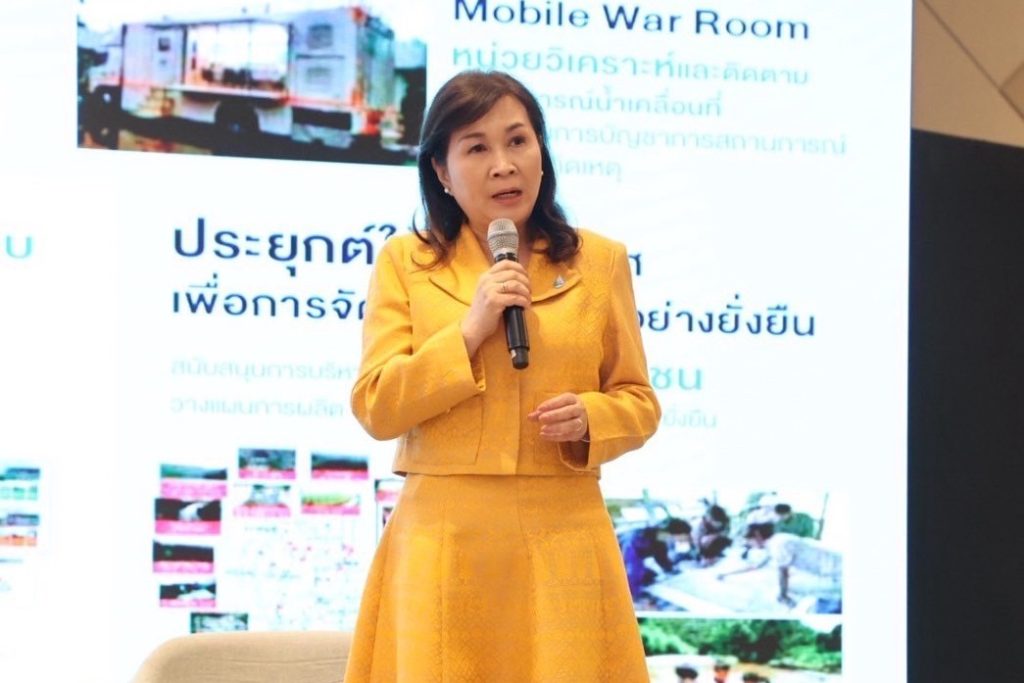
Dr. Royboon Rassamethes, Director of HII, presented the capabilities of the National Hydroinformatics Data Center (NHC), a central platform integrating data from 54 agencies across 12 ministries. The NHC provides a decision–support system with forecasting technology, community water management tools, and other practical applications.
Dr. Royboon noted that HII aims to strengthen national water security by integrating artificial intelligence (AI) and machine learning (ML) to improve forecasting accuracy and upgrade the NHC into a science–based decision–support tool for water management and disaster mitigation.
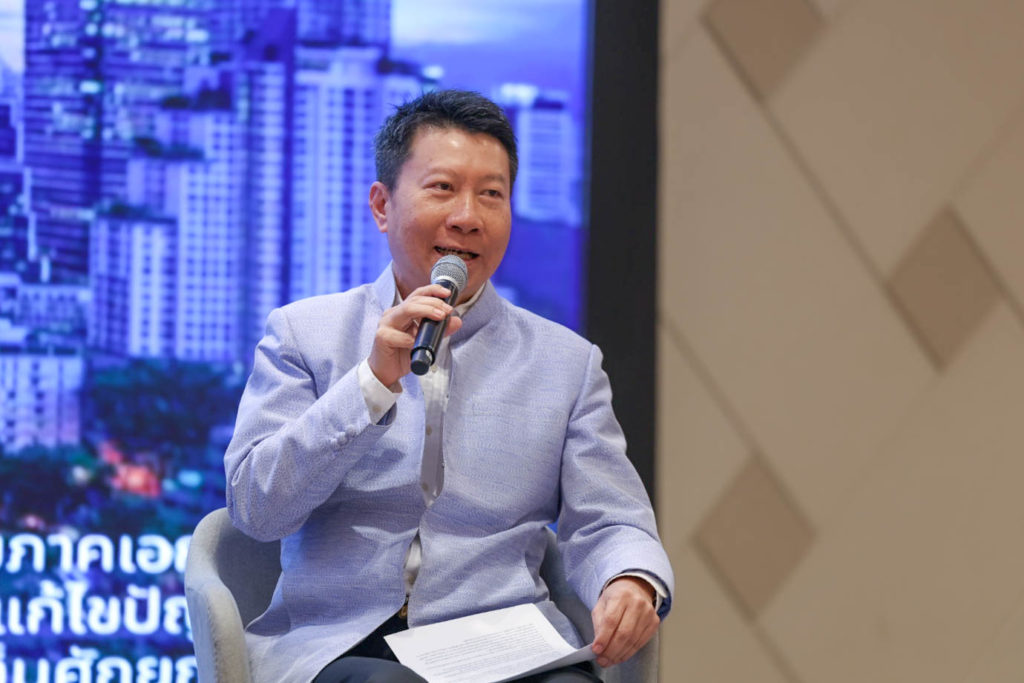
Mr. Vichai Assarasakorn, Honorary Chairman of the Thai Chamber of Commerce, reflected on the lessons from the devastating 2011 floods, which caused an estimated THB 1.4 trillion in damages (around 12% of GDP), affected over 12.8 million rai of farmland and 13 million people, and disrupted multiple industries. He described the disaster as a “wake–up call” for businesses to understand that water management is not only about infrastructure, but also about effective governance. He commended HII for establishing the NHC and the ThaiWater platform, which provides rainfall, storm, and water forecasts—helping businesses plan for risk mitigation in manufacturing, insurance, banking, and agriculture.
Mr. Vichai cited the Kabinburi Industrial Estate in Prachinburi Province as an example, where a joint water management center with HII includes reservoirs holding 4–6 million cubic meters, IoT and sensors to improve sugarcane irrigation efficiency from 7–8 tonnes per rai to over 15 tonnes per rai, and floating solar power generation, which is more efficient than land–based systems. He affirmed that the Thai Chamber of Commerce is ready to mobilize its network in all 76 provinces, including the Young Entrepreneurs Chamber of Commerce (YEC), to collaborate with HII in applying data–driven, area–specific planning for infrastructure and water management to address both flood and drought challenges.

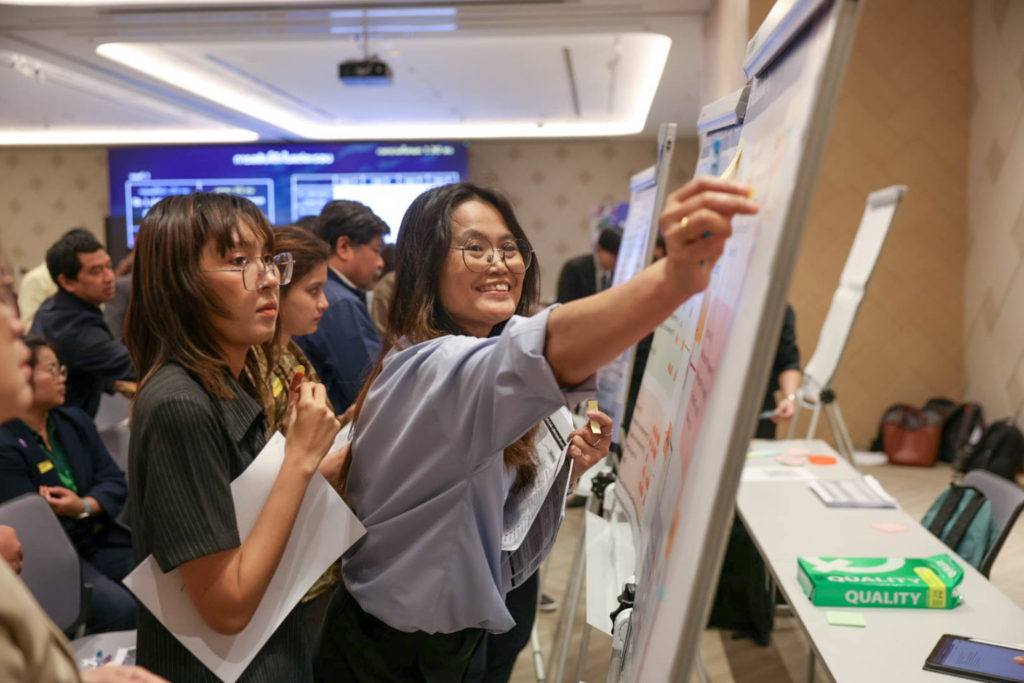

As part of the event, participants were divided into four main groups for a brainstorming session, with the following conclusions:
- Water Management – Prioritize community engagement in R&D to build knowledge and establish water management systems at all levels—community, private sector, and policy. Proposals include updating laws, reducing overlapping authority, and ensuring community participation
- Water Information Management – Improve data quality, with agricultural applications as the first priority, followed by long–term disaster prevention. Key challenges include data integration and limited technological skills.
- Research – Universities should develop integrated, practical water management systems. The public sector should focus on disaster management and develop community–level technologies, while the private sector should prioritize water quality and prevention of impacts on catchment areas, communities, and water users. All stakeholders should be involved, with increased public awareness of early warning systems.
- Policy White Paper – Government agencies and universities should develop AI technologies to improve water management. Water users emphasized human resource development to enable access to data and technology. The private sector called for modeling tools to enable proactive, nationwide water management, covering workforce planning, process improvement, and integrated management at all levels.


